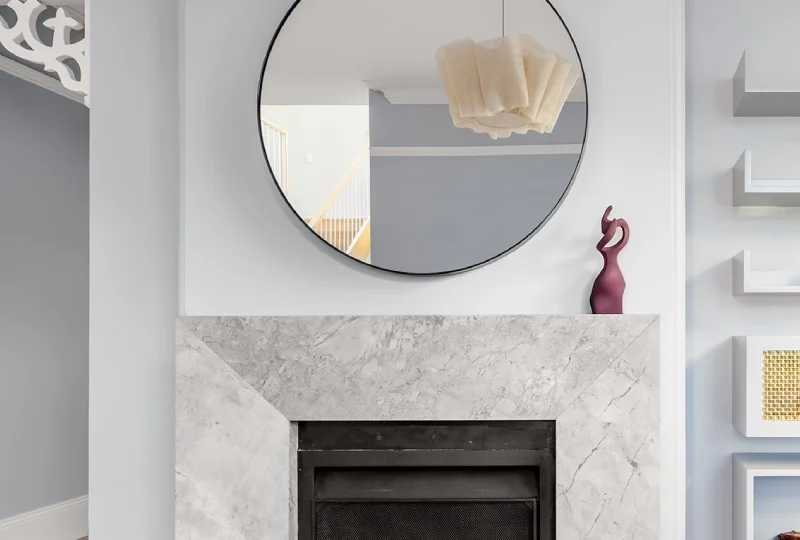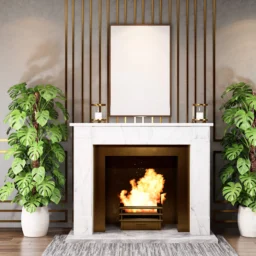
How to Choose the Best Stone for Fireplace
Choosing the right stone for your fireplace can transform your space, creating a warm, inviting, and stylish atmosphere. But with a myriad of stone options available, how do you make the right choice? This guide will walk you through the process, helping you understand the key factors to consider when selecting the perfect stone for your fireplace. We’ll delve into the world of natural stone, manufactured stone, and everything in between, discussing their pros and cons, aesthetic appeal, maintenance requirements, and more. Whether you’re renovating your existing fireplace or installing a new one, this comprehensive guide will equip you with the knowledge to make an informed decision. So, let’s ignite the discussion and help you choose the best stone for your fireplace.
Table of Contents
The Benefits of Stone Fireplaces:
The enduring allure of stone fireplaces lies in their inimitable combination of aesthetic appeal, resilience, and versatility. Here, let’s dissect the core benefits:
- Stone fireplaces have many positive qualities, but one of the best is the architectural freedom they provide. Stone fireplaces are versatile and can complement any kind of home, whether it be ultra-modern and minimalist or warm and welcomingly rural. You may make your fireplace reflect your own style and taste by selecting the stone it is made of. Marble’s timeless elegance, granite’s raw beauty, and limestone’s understated refinement are just a few examples.
- Stone fireplaces are known for their durability and low upkeep requirements. Quartzite and granite are two examples of very hard stones that are also known for their resistance to heat, scratches, and chipping. Due to its longevity, a stone fireplace may be the focus of your living room for many years with no effort on your part. To keep them in pristine shape, you need only dust them regularly and perform a thorough cleaning once in a while.
- Heat Efficiency Stone fireplaces are top-notch in this regard. Stone has intrinsic thermal qualities that allow it to absorb heat and gradually release that heat over time. The effectiveness of the fireplace is increased thanks to the steady release of heat, which keeps the space at a pleasant temperature. This feature can help reduce heating costs in the winter.
Different Types of Stone for Fireplaces
A fireplace can be the heart of a home, providing warmth, ambiance, and a focal point that draws people together. The choice of stone for your fireplace can significantly impact its aesthetic appeal and functionality. Here are some of the most popular types of stone used in fireplaces:
Marble Fireplaces
Known for its elegance and sophistication, marble is a classic choice for fireplaces. Its unique veining and availability in various colors make it a versatile option that can suit a range of interior styles. However, marble is porous and can stain easily, so it requires regular sealing and careful maintenance.
Granite Fireplaces
If durability is a priority, granite is an excellent choice. It’s one of the hardest stones available, making it resistant to scratches and heat. Granite comes in a wide range of colors and patterns, allowing for customization of your decor.
Limestone Fireplaces
Limestone offers a more rustic and traditional look. It’s neutral colors and smooth texture make it a popular choice for those seeking a minimalist or country-style aesthetic. Like marble, limestone is porous and requires sealing to prevent damage.
Quartzite Fireplaces
Quartzite is a hard, non-porous stone that’s resistant to heat and stains. It has a sparkling quality due to the tiny quartz crystals in the stone, adding a touch of glamour to your fireplace.
Each type of stone has its unique characteristics, advantages, and drawbacks. When choosing a stone for your fireplace, consider factors like durability, maintenance, cost, and how well it fits with your home’s style. Consulting with a professional can provide valuable insights to help you make the best choice for your fireplace.
Factors to Consider When Choosing Your Fireplace Stone
The stone you select for your fireplace is an important design element, so give it some thought. Several key considerations include the following:
- Interior Design Trends: Your fireplace’s design and color palette should complement the rest of your interior. Stone fireplaces, such as those fashioned from piled stone or limestone, would be a better fit for a rustic or country-style home, while marble would be the ideal choice for a more rich and beautiful setting.
- Requirements for Upkeep: The care requirements of various stones vary. Marble, on the other hand, may need more frequent care to preserve its gloss than granite does, despite the fact that both are quite hardy and require little in the way of upkeep.
- Cost: Depending on the stone, prices might vary widely. Consider not just the price of the stone and the labor to set it up, but also the expense of upkeep in the years to come.
How to Match Your Fireplace Stone with Your Home Decor
It’s a good idea to choose fireplace stone that complements the rest of your home’s design. Here are a few recommendations:
- Choose smooth stones like black granite or white quartzite for a contemporary and minimalist look. These stones are a wonderful addition to a modern design scheme due to their fresh, uncluttered appearance.
- A fireplace made of limestone or piled stone would look great in a room with a rustic or country theme. These stones’ natural, earthy tones complement the inviting, homey feel of the design scheme well.
- A marble fireplace may be a beautiful focal point in a room with classic furnishings. If you’re looking for a dramatic impression, pick a marble with heavy veining.
- You can play around with various stone mixes if your home’s design aesthetic is varied. A fireplace, for instance, may be made all the more special and eye-catching by combining granite and marble.
Conclusion
In addition to providing warmth, a stone fireplace that has been carefully selected may greatly improve the visual attractiveness of a room. Think about your home’s style, your maintenance habits, and your budget before settling on a stone for your fireplace. Your stone fireplace will be a reflection of your individuality and taste, whether you choose refined marble, sturdy granite, rustic limestone, or exotic quartzite.
FAQs
How do I choose a stone for my fireplace?
There are a few important considerations when selecting a stone for your fireplace. Consider your home’s general style and décor first. You want to make sure the stone you pick fits in with the overall design. Second, think about how often you’ll need to seal the stone. While certain stones like granite and quartzite don’t require much in the way of maintenance, others like marble do. Finally, think about how much money you have. The price of a stone can vary widely depending on its kind. Consider not just the price of the stone and the labor to set it up, but also the expense of upkeep in the years to come.
What color is best for stone fireplace?
The appropriate paint color for a stone fireplace is very dependent on the rest of the room’s design. Smooth stones in neutral colors, such as black granite or white quartzite, may work well for a contemporary and minimalistic design scheme. Limestone and piled stone both have natural, earthy tones that would work well in a rustic or country setting. A marble fireplace with a deep, warm color is a classic choice for a formal living room.
Is natural stone good for a fireplace?
Fireplaces made of genuine stone are highly recommended. It may be used safely in close proximity to a fireplace because to its great heat resistance, and its thermal qualities can even aid in more efficient heating. In addition to its beauty, natural stone is also prized for its durability. Finally, real stone provides a plethora of design alternatives, from which you may choose the perfect style for your home.
Is quartz or marble better for a fireplace?
When it comes to fireplaces, both quartz and marble provide their own distinct benefits. Marble’s classic good looks and high-end feel make it a fantastic material choice for any design that prioritizes sophistication and class. To keep it in pristine condition, though, may need more effort.
Quartz, on the other hand, is unaffected by high temperatures and lasts for a very long time. It’s available in many different hues and designs, giving you a wide range of options for your project’s aesthetic. It may lack the opulence of marble, but it is the more sensible choice in terms of longevity and upkeep.
Your selection between quartz and marble should be based on these three factors: your aesthetic preferences, your willingness to do upkeep, and your budget


